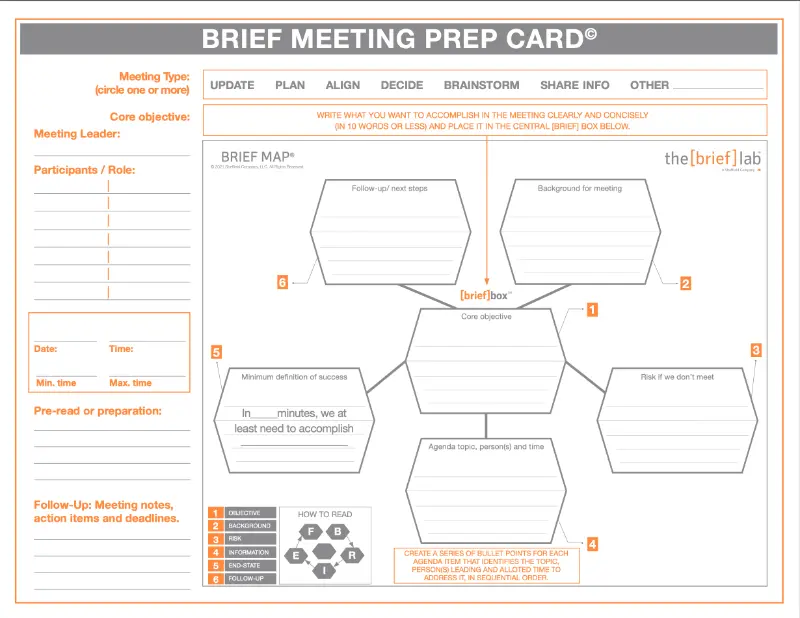Moving beyond a too-brief response to spark better, longer conversations
How are you doing?
How do you feel?
How was your weekend?
Often, we respond to these innocuous questions with some variation of “I’m fine” and move on. Some would say that is the easiest and briefest answer– but it’s not always the best one.
Of course, I’m not a therapist or a counselor, and this isn’t meant to be that kind of blog, nor was episode 221 of the “Just Saying” podcast I did on this topic. However, there are times when there is some value in being able to communicate your emotions in clear and concise words that might tell more about how you’re actually feeling.
Preserve brevity while being open
I heard a sermon on how to communicate an emotion in very few words, which is what got me thinking about this topic. It was really powerful because the pastor’s advice was so clear and impactful. The strategy allows you to preserve the brevity we promote here at The Brief Lab.
The pastor said that when somebody asks you how are you feeling, the best way to answer the question is in a very brief but honest response. “I feel threatened.” “I feel wonderful.” “I feel overwhelmed.” You say no more than a few words and then stop talking. That’s it. And wait.
These brief but honest responses should quickly elicit a follow-up question, sparking a deeper, clarifying conversation. That follow-up question would almost always be “Why do you feel that way?”
More and more often, when I lead courses I ask the question “How does that feel?” Though that might seem a little “touchy-feely,” especially to our military clients, it’s starting to get me thinking of the best way to answer it: give people a short, sweet, and thoughtful reply.
When you hear that question, of course you can avert it and insert the “fine” or “good” response. I’m inviting you, however, to really put some thought into the question so that when it comes your way, you can give a brief but honest answer, which might lead to a deeper, valuable conversation.
Make quiet time to prepare a tighter reply
Before you are able to answer the question in a brief and honest way, you will need quiet time to reflect on how you are actually feeling, on how you are doing, etc. When we first introduced the book Noise, we talked about using quiet time as a method to prepare. It works so well to get to the root of your short answer.

In the book Noise, I talk about the importance of quiet time
I recommend doing this every day– scheduling quiet time. I’ll never forget the response I got from a student after he spent quiet time figuring out how he felt.
He said when he finally stopped fidgeting, he realized how he was really feeling: “I’m in pain,” he said. The noise of the world around him distracted him so much that he didn’t even notice his own physical pain. It was eye opening for him and for me.
So I would suggest that when you schedule some quiet time, you carefully reflect on how you are really doing, or consider how it is really going, etc. Give yourself that precious quiet to honestly uncover and express those feelings to someone who wants to know your mindset/wellness; now you will have a brief and honest answer to share.
Figure out how you’re really feeling
There is a simple tool that was created by Dr. Robert Plutchik called the emotion wheel. Plutchik says there are eight basic human emotions: joy, sadness, acceptance, disgust, fear, anger, surprise, and anticipation, and within that there are many, many nuances.
Other experts have different ideas about how many emotions we experience (some say 27; others say seven). The emotion wheel is a powerful and simple tool to move beyond the “I’m good” response and formulate your brief but honest, deeper answer to the question of how do you feel, or how are you doing.
After you’ve had time to examine the wheel and choose an emotion that matches your feelings, create a headline centered around that, will will allow you to communicate your emotions in words.
For example, maybe you’ve started a new job that you’re enjoying and the emotion ‘amazement’ feels right for you. Your headline could be something like “I’m better than expected.” or “I’m enjoying new challenges every day.” or “I’m exhausting my creative limits and growing.”
Or maybe you are in the same position– new job– but you’re feeling terror about your ability to do it effectively. The headline might be “I’m being pushed past my limits.” Or “I’m being stretched.” Or perhaps more simply “I feel inadequate.”
Communicate your emotions to people you trust
I wouldn’t recommend sharing it at the supermarket or when you meet a new coworker, or someone at a networking event. Share this headline with people you can trust to care about how you’re feeling and ask you why.
When you identify that “safe” person, it might even be useful to give them a warning that you’re working on being able to communicate your emotions in fewer, clearer words. So when your fiance asks “How are you doing?”, you might want to say “Hey I just listened to a great podcast about how to express emotion, so I’m working on sharing a brief and honest answer to that question. If you want to dive deeper with me, I’m open to that. I’m so happy we’re getting married!”


